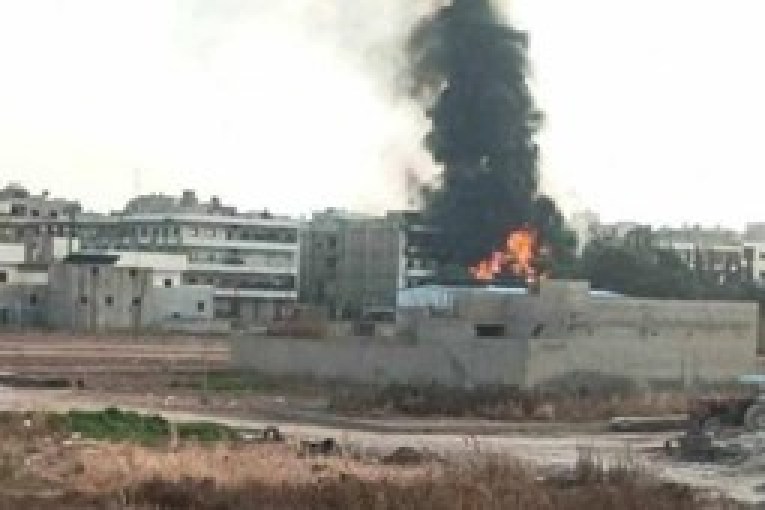
Afrinpost – Special
In this report, “Afrinpost” touches on the village of Qarmitlaq, which is located to the west of the center of the “Shieh / Sheikh Al-Hadid” district, about 4 km on the Turkish-Syrian border.
The borders were drawn in the village according to the agreement to relinquish the Iskenderun Brigade between the French Mandate and Ataturk in 1938, and this was the first injustice suffered in the village as a result of the Turkish state’s seizure of the fertile plain of the village, which is considered an extension of the Amuk valley ( Dashta Hamqiye ) and is estimated at about 1500 hectares.

Settlement proportion:
After the Turkish aggression against the Kurdish region of Afrin on January 20, 2018, the occupation and its armed forces managed to occupy the village on 16/2/2018.
Before the occupation, the village consisted of approximately 370 Kurdish families. After the occupation, only 130 families returned, most of whom are elderly, while settlers from Hama countryside and Idlib occupy the remaining 240 homes.
Seizures and takeovers:
The agricultural lands located in the south of the village belonging to the citizen “Hussein Dado” were seized and turned into a training camp for the militia “Sultan Suleiman Shah”, which was completely bulldozed and is now unfit for agriculture.
The militia leader, Muhammad al-Jasim / Abu Amsha, seized the houses belonging to the Daoud family (Hanif, his brother Askar and their cousins, occupied them and inhabited his relatives in).
The martyrs:
Many of the villagers were martyred: among them the fighter in the “Women’s Protection Units” Hayat Abdullah bint Adnan.
In addition to the two martyrs, Ahmed Balkro Bin Hussein and his wife, Qidrat Balkro Bint Ezzat, in a bombing of Turkish Airlines at the Trende / Al-Zarifa checkpoint, while they were trying to get out of the city.
Also, the citizen Ali Ahmad Qazi, who was injured as a result of a mine explosion upon his return with his flock of sheep to the village, was martyred and transferred to the Turkish hospitals and he told his family that he died, but they did not return his body to the village and it was said that he was buried in Turkey.
Meanwhile, the citizen “Mohamed Hajiko” has been missing since the Turkish invasion of Afrin, and nothing is known about him until now.

The state of the village during the Turkish invasion and following the military occupation:
The village was not bombed, as it is a border village and close to the Turkish border outposts. Its people left early, so it was not subjected to major damage as a result of the hostilities.
The militia occupies the village is the militia of “Sultan Suleiman Shah” led by “Muhammad Al-Jasem Abu Amsha”. Recently, after joining the battles in Libya, his brother Saif Al-Din Al-Jasim is acting on his behalf, and they are from the village of Ghousa, south of Suqaylabiyah.
- The first families returned to the village at the beginning of April 2018, and the occupation forces prevented them at first on the pretext of the planted mines, and it was later revealed that during this period they stole the entire village houses, and then sold the contents of the houses to their owners!
- The agricultural machinery (tractors, plows and cars) were returned for huge sums of money, not less than $ 5,000 for each vehicle.
- The property of the displaced people outside the village was handed over to their relatives, and 35% of the season is taken as a royalty by the militants, while the rest of the village pays 10 to 15% to the militia.
- Village families pay 10 thousand Syrian pounds per month to the militia – in exchange for accommodation in their homes!
- Militia violations against the youth and the people of the village from countless kidnapping campaigns, and they are usually released after paying a ransom of money ranging from one thousand dollars to ten thousand dollars for each kidnapped one.
On February 29, 2019, a wall was built on the Turkish-Syrian border, and 25 meters of width were annexed along the ancient Turkish-Syrian border, and 1,500 olive trees belonging to the people of the village were uprooted, whose age exceeded 50 years.







